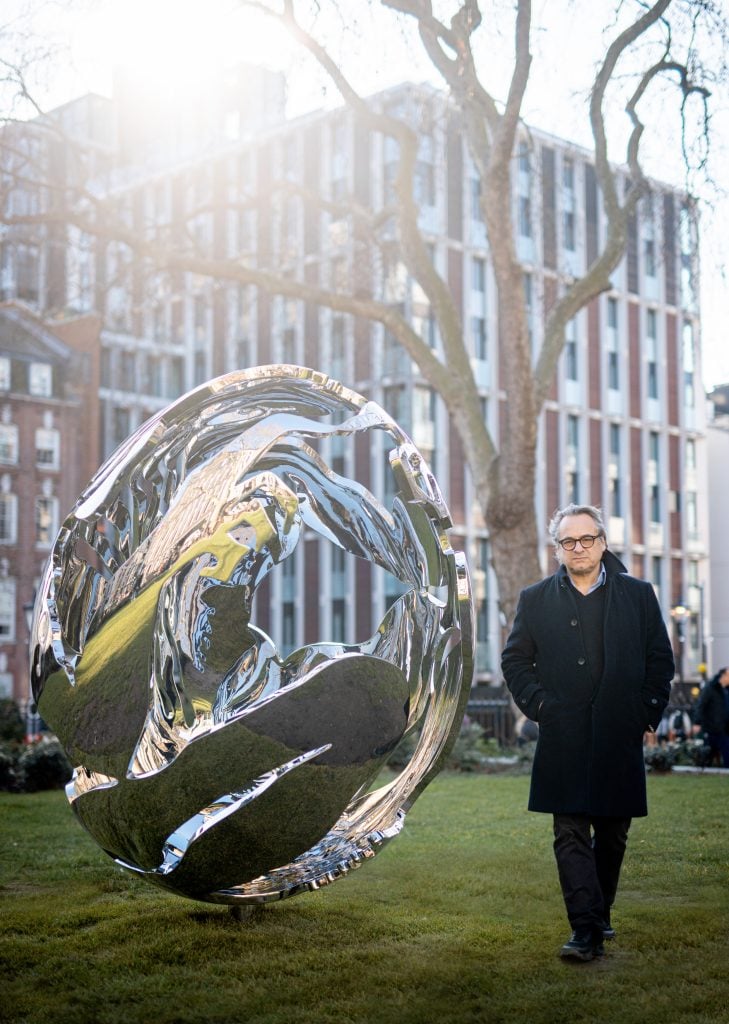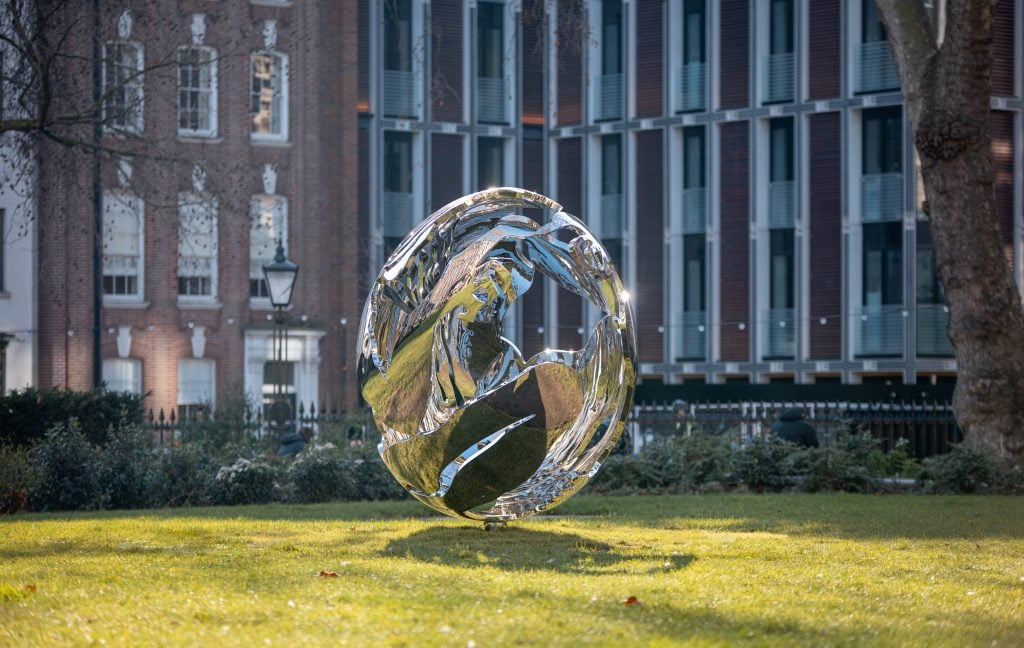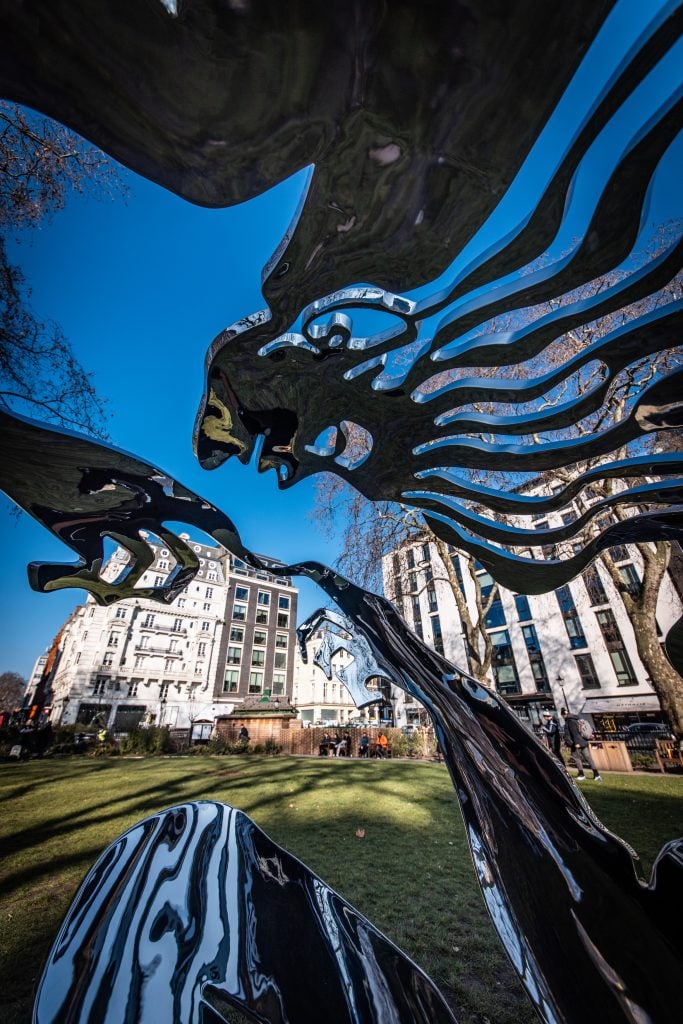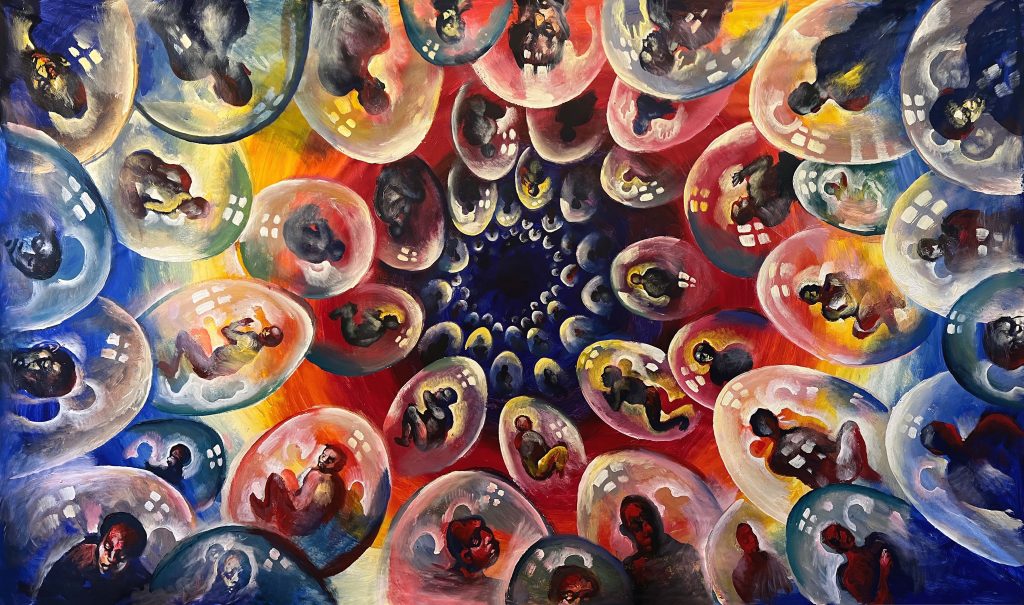Gallery Network
7 Questions for British Artist David Breuer-Weil on How Public Sculpture Can Shape the Collective Imagination
Breuer-Weil's 'Sister' will be on view in Hanover Square, London, through July 2023.

Breuer-Weil's 'Sister' will be on view in Hanover Square, London, through July 2023.

Artnet Gallery Network

This month, British artist David Breuer-Weil’s steel sculpture Sister was installed in the newly restored Hanover Square in London, where it will reside through the end of July 2023. Created in collaboration with E & R Cyzer Gallery and as part of Westminster’s “City of Sculpture,” initiative, Sister aims to expand conceptions of what sculpture can achieve by engaging in a fourth dimension. By cutting figurative images on the sculpture’s polished stainless steel, on which the viewer and setting are reflected, the work takes on a temporal element defined by the viewer’s engagement with the piece.
Both a painter and sculptor, Breuer-Weil has come to be recognized as one of the U.K.’s leading contemporary artists, with his work installed in public spaces across London. His works are frequently of monumental scale and routinely engage with themes of existentialism and questions of the human condition. We caught up with the artist to learn more about his newest project, and what he thinks the role of public art is today.

Installation view at Hanover Square, London, David Breuer-Weil, Sister (2023). Courtesy of Galerie B. Weil, London.
How would you describe your creative process, where do you start? Do you prefer working with fully formed ideas or is your process more intuitive?
It always starts with a small, uncensored scribble in pencil in one of my hundreds of tiny notebooks. Images pop into my head throughout the day, suggested by the human shape of a tree, a cloud, a paving stone, a dream at night, a passing thought. These are developed into highly finished pencil drawings, paintings, and sculptures. It is a constant automatic way of thinking and I am often struck by electrifying thoughts that need to be recorded.
Your work Sister is currently on display in Hanover Square, London. Can you tell us a bit about the work, and the inspiration behind it?
During a museum meeting, I started drawing a human figure on my empty polystyrene coffee cup, cutting it out with the tip of a biro. That is how the idea for the series, including Sister started. A figure drawn on a curved surface could create a new type of sculpture, drawing in three dimensions. Sister is the same medium as two of my permanent public sculptures: Centre of the World and Soul. I have made many bronze sculptures titled Brothers, including two currently on display in Portman Square. As an antithesis in form, gender, and materials, Sister was born.
What do you want viewers of Sister to take away with them? What do you hope the viewing experience is like?
From a distance, it is an image of fertility—new beginnings, hope, an egg form. Closer up, it becomes clear that a female form hugs the whole egg and creates reflections and interactions, hinting at a fourth dimension—the internal reflections of features of Sister move with the viewer in time. My steel works represent light, spirit, soul, whereas my bronzes are more about our relationship with the earth, with mortality. I once had an exhibition titled “Heaven and Earth” (2013)—our lives suspended between these two extremes. In sculpture, I want to hint at dimensions beyond three dimensions, which is a great challenge.

David Breuer-Weil, detail of Sister (2023). Courtesy of Galerie B. Weil, London.
Your sculptures have been exhibited in numerous public spaces across London. What do you think the role of art, specifically public art, is in society today?
Much art today tends to be either too political or commercially motivated, but there are other options, art that speaks to our current lives and collective experiences. We are living through unprecedented times and want to create art that will have real meaning. Over the last three years, I have made large-scale drawn and painted installations including The Coviad, Lockdown, Pandemic, Invasion, and most recently, Quake, which aim to capture the times we are living through in searing ways. My sculpture Flight currently towers over Euston Road, King’s Cross, seen by thousands of people every hour, far more than would ever see it in museums. However large, it is a very vulnerable human figure in flight, a refugee, escaping, soaring, breaking free, a fairly universal subject. Emergence II, permanently installed in Canary Wharf, portrays humanity unexpectedly emerging from the ground amidst a bustling new city. Public art is one way to burn images into the public imagination as they go about their daily lives.
Being a painter as well as sculptor, how do these practices inform one another? Do you approach them as distinct, or do you see their boundaries as more malleable?
I have created an imaginative universe, “Nerac,” an alternative reality with a rich and complex iconography that I draw upon in all of my work. There are hidden meanings and strong connections behind all of these works, even if they appear different at first glance. For example, the egg form of Sister appears in paintings such as Pupil (2022), where it is duplicated many times to portray an image of the next generation, yet to be born, whilst I have composed a whole series of paintings based on reflective bubbles and spheres similar to my steel sculpture Soul. I had the idea of creating a new type of pictorial reality based on spherical construction.

David Breuer-Weil, Pupil (2022). Courtesy of Galerie B. Weil, London.
Where do you typically find inspiration? Are there any artists, either historic or contemporary, that you think have influenced your work the most?
I have learned from too many artistic forebears and contemporaries to list, but all of my works ultimately derive their meaning and purpose from the desire to express these challenging times, filtered through my imaginative world. In my bronzes and stone works my main inspirations are prehistoric. I collect ancient Egyptian, Greek, Etruscan, and Roman small bronzes, and these inspire me as much as modern artists and contemporary colleagues, working with relatively new sculptural materials, like treated steel.
What are you working on now or next? Are there any projects on the horizon that you are particularly excited about?
I am just completing my next public sculpture, Reflection, which will be installed permanently on Dean Street, Soho, in March 2023. It is a very different take on the concept of reflection, as a towering ten-foot-tall bronze of one figure reflected in another will mark the intersection of Dean Street and Oxford Street. It refers to some of the legendary figures who used to frequent this area, such as Lucian Freud and Francis Bacon. In April, I am having a mini-retrospective of my large sculptures as part of the Brighton Festival. To date, I have tended to focus on London and cities abroad but inspired by the Arts Council’s new directive am looking at locations throughout the U.K., whilst planning some ambitious installations of my paintings and drawing friezes in the coming months.
Learn more about David Breuer-Weil here.